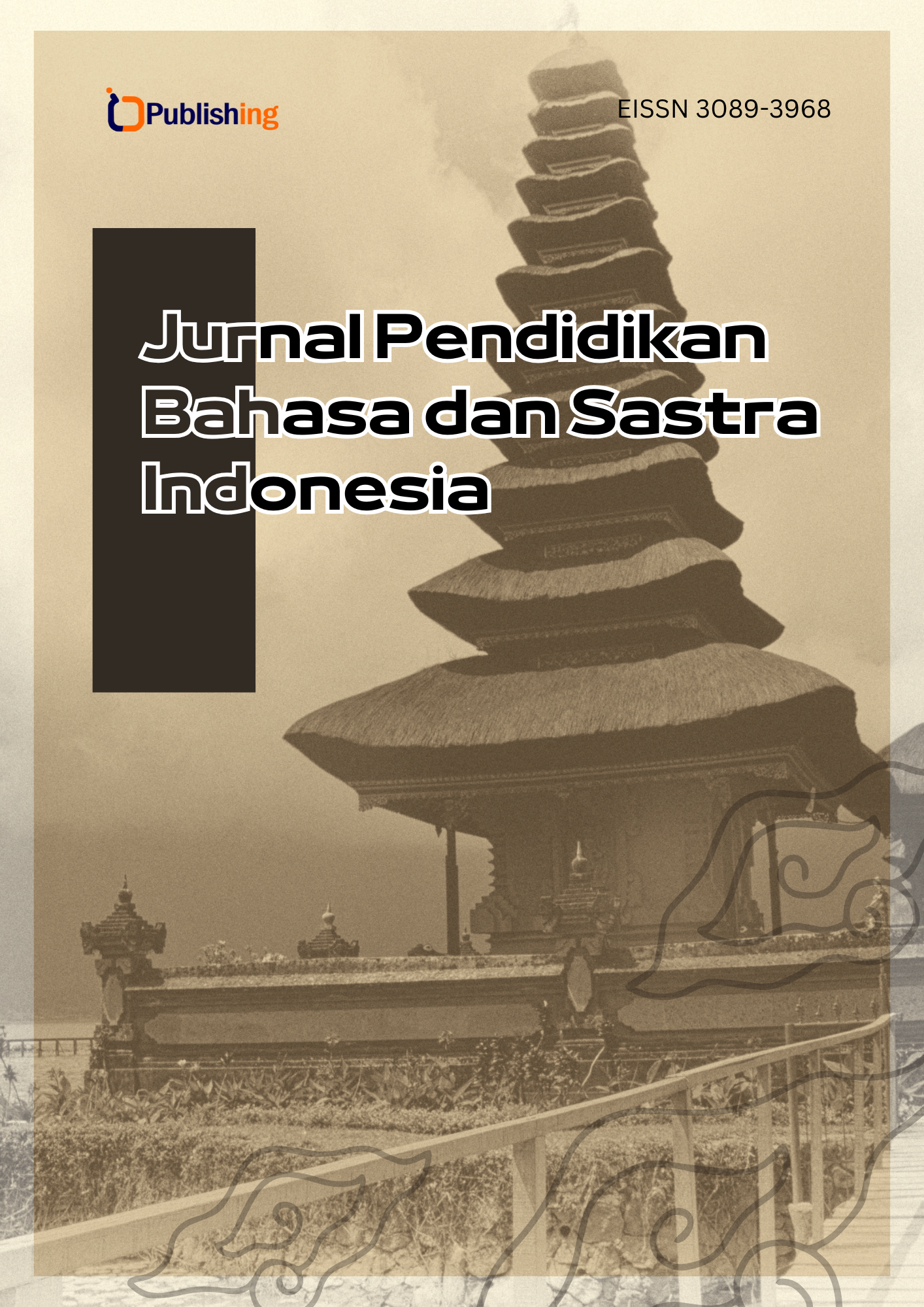Analisis Kesejahteraan Fasilitas terhadap Semangat Belajar Mahasiswa Fakultas Bahasa dan Seni UNIMED
DOI:
https://doi.org/10.47134/jpbsi.v1i1.1202Keywords:
Fasilitas, Pendidikan, Mahasiswa, KreativitasAbstract
Penelitian ini bertujuan untuk memecahkan masalah yang sering muncul terkait ketersediaan sarana dan prasarana pendidikan. Metode penelitian yang akan digunakan ialah metode penelitian kuantitatif. Data dalam penelitian ini akan dianalisis melalui metode deskriptif yang memperoleh informasi dari tanggapan para responden terhadap survei kuesioner yang disebarluaskan. Dari hasil penelitian tersebut mengungkapkan bahwa Fakultas Bahasa dan Seni Universitas Negeri Medan, memiliki sejumlah kekurangan ditemukan dalam penyediaan fasilitas yang memenuhi standar sebagai tempat belajar bagi mahasiswa. Secara langsung memengaruhi tingkat kecerdasan para mahasiswa dan memiliki dampak yang signifikan terhadap kreativitas mereka. Dengan adanya fasilitas yang memadai, mahasiswa dapat berkreasi secara bebas dalam berbagai bidang serta beraktifitas dengan lancar.
References
Sugiyono. (2017). Metode penelitian pendidikan: Pendekatan kuantitatif, kualitatif, dan R&D. Alfabeta.
Gusni, A. (2019). Sarana Dan Prasarana Pendidikan. Judul Artikel, pp. 1-3.
Sukandi, P. (2010). HUBUNGAN ANTARA FASILITAS KAMPUS TERHADAP KEPUASAN MAHASISWA DALAM MENGAHADAPI DAYA SAING JASA PENDIDIKAN (Studi Kasus : Mahasiswa Fakultas Bisnis dan Manajemen Universitas Widyatama). Repository Universitas Widyatama, 11-12.
Kementerian Pendidikan, Kebudayaan, Riset, dan Teknologi. (2022). Peningkatan kualitas pendidikan di era digital. Diakses dari https://www.kemdikbud.go.id
Universitas Negeri Medan. (2021). Laporan tahunan Fakultas Bahasa dan Seni 2020/2021. Universitas Negeri Medan.
Abusamra, A. (2022). The Role of Community Colleges in Developing Creativity and Innovation Skills of Vocational Students (The University College of Applied Science as a Case Study). Dirasat: Human and Social Sciences, 49(2), 583–598. https://doi.org/10.35516/hum.v49i2.1817 DOI: https://doi.org/10.35516/hum.v49i2.1817
Asadpour, A. (2021). Student challenges in online architectural design courses in Iran during the COVID-19 pandemic. E-Learning and Digital Media, 18(6), 511–529. https://doi.org/10.1177/20427530211022923 DOI: https://doi.org/10.1177/20427530211022923
Bain, K. (2021). SUPER COURSES: The Future of Teaching and Learning. Super Courses: The Future of Teaching and Learning, 1–294. DOI: https://doi.org/10.1353/book.127038
Don, Y. (2021). Challenges for using organizational climate tools for measuring teacher job satisfaction. International Journal of Evaluation and Research in Education, 10(2), 465–475. https://doi.org/10.11591/ijere.v10i2.20703 DOI: https://doi.org/10.11591/ijere.v10i2.20703
Gonzalez-Almaguer, C. (2021). VIRTUAL and AUGMENTED REALITY to EXPLOIT STEM-SKILLS-BASED LEARNING for ENGINEERING STUDENTS USING the TEC21 EDUCATIONAL MODEL. Proceedings of the 23rd International Conference on Engineering and Product Design Education, E and PDE 2021. DOI: https://doi.org/10.35199/EPDE.2021.74
He, H. (2022). Investigating How Early-Career Engineering Faculty Perceive the Role Creativity Should Play in Engineering Education. International Journal of Engineering Education, 38(2), 564–580.
Jolly, L. (2023). Lab in Bag for Higher and Technical Education. Journal of Engineering Education Transformations, 37, 49–55. https://doi.org/10.16920/jeet/2023/v37is1/23168 DOI: https://doi.org/10.16920/jeet/2023/v37is1/23168
Liu, H. Y. (2022). Effectiveness of Interdisciplinary Teaching on Creativity: A Quasi-Experimental Study. International Journal of Environmental Research and Public Health, 19(10). https://doi.org/10.3390/ijerph19105875 DOI: https://doi.org/10.3390/ijerph19105875
Mousavizadeh, S. N. (2022). The experiences of nursing students using virtual education during the COVID-19 pandemic. Journal of Medicine and Life, 15(9), 1090–1095. https://doi.org/10.25122/jml-2021-0315 DOI: https://doi.org/10.25122/jml-2021-0315
Nurrijal. (2023). Creative Problem Solving Process Instructional Design in the Context of Blended Learning in Higher Education. Electronic Journal of E-Learning, 21(2), 80–97. https://doi.org/10.34190/ejel.21.2.2653 DOI: https://doi.org/10.34190/ejel.21.2.2653
Nurrochmat, E. S. (2022). Implementation of Adiwiyata program on environmental sustainability in public vocational high schools of Malang: Student participation perspective. AIP Conference Proceedings, 2489. https://doi.org/10.1063/5.0094345 DOI: https://doi.org/10.1063/5.0094345
Pilosof, N. P. (2021). Evidence-Based Design in Architectural Education: Designing the First Maggie’s Centre in Israel. Health Environments Research and Design Journal, 14(4), 114–129. https://doi.org/10.1177/19375867211007945 DOI: https://doi.org/10.1177/19375867211007945
Saimon, M. (2023). Enhancing the 4Cs among college students of a communication skills course in Tanzania through a project-based learning model. Education and Information Technologies, 28(6), 6269–6285. https://doi.org/10.1007/s10639-022-11406-9 DOI: https://doi.org/10.1007/s10639-022-11406-9
Srivani, V. (2023). Influence of Education 4.0 on English Language Instruction in Telangana’s Engineering Institutions. Journal of Intercultural Communication, 23(2), 50–57. https://doi.org/10.36923/jicc.v23i2.165 DOI: https://doi.org/10.36923/jicc.v23i2.165
Sujana, A. (2023). Implementation of small side games in the learning process education physical sports and health at SMK Padang. Retos, 50, 1135–1139. https://doi.org/10.47197/retos.v50.100161 DOI: https://doi.org/10.47197/retos.v50.100161
Yohana, C. (2021). Study of the influence of education and literation of entrepreneurship in vocational high schools: Indonesian case. Academic Journal of Interdisciplinary Studies, 10(1), 34–50. https://doi.org/10.36941/ajis-2021-0004 DOI: https://doi.org/10.36941/ajis-2021-0004
Yu, C. (2024). The Implementation of Art Appreciation Courses in Chinese University General Education: A Case Study. Journal of Curriculum Studies Research, 6(1), 60–82. https://doi.org/10.46303/jcsr.2024.5 DOI: https://doi.org/10.46303/jcsr.2024.5
Downloads
Published
How to Cite
Issue
Section
License
Copyright (c) 2024 Rianti Nurul Arifah, Skaryati, Aliyah Ramadani

This work is licensed under a Creative Commons Attribution 4.0 International License.





